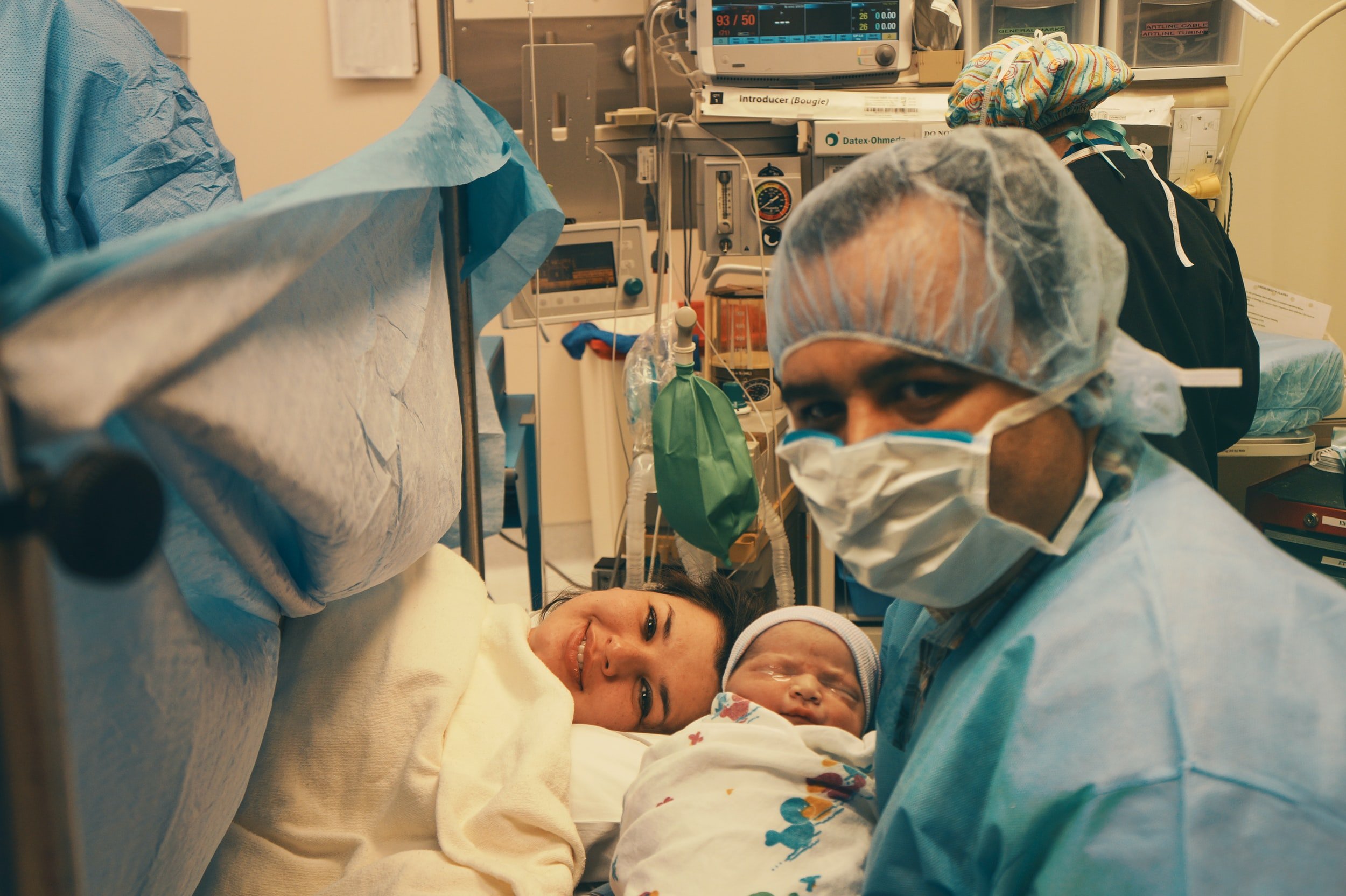2023 Update: Episiotomy and C-section Rates at Atlanta and St Pete Hospitals
/by Cynthya Dzialo, Birth Doula-Photographer, Lactation Counselor, and Owner of The Happiest Doulas
Experts agree that Cesarean Sections or c-sections, particularly among low-risk, first-time mothers, may not be necessary and can actually be risky for mother and baby. C-sections are linked to an increased risk of infections and blood clots, and many women who aren’t at higher risk for delivery complications get unnecessary c-sections.*
Various evidence-based strategies aimed at hospitals and healthcare providers can help reduce c-sections in low-risk women. Evidence shows that doula support improves birth outcomes, including a vaginal delivery with lowered risk of episiotomy and other interventions. Benefits described in randomized trials include shortened labor, decreased need for analgesia, fewer operative deliveries, and increased satisfaction with the experience of labor. Read ACOG’s approach to preventing the primary c-section here.
According to the Healthy People 2030 initiative by the U.S. Department of Health and Human Services, and Leapfrog Group’s Maternity Care Expert Panel, a hospital’s rate of first-time pregnancy (nulliparous/NTSV) c- c-section delivery should be measured against a national target of 23.6%. The World Health Organization states the international healthcare community has considered the ideal rate for c-sections to be between 10-15%.
Experts agree that episiotomies - an incision made in the perineum during childbirth - should not be done routinely and can result in worse perineal tears, loss of bladder or bowel control, and pelvic floor defects. According to Leapfrog Group, the national episiotomy rate should be 1% for all hospitals. Hospitals report on their episiotomy rate in vaginal deliveries.
To decrease perineal trauma during the second stage of labor, studies show it may be beneficial for nulliparous people to perform perineal massage in the weeks before labor begins; however, evidence is limited on the benefits and there’s no consensus on frequency or duration. Some studies showed that more frequent massage had less benefit than less frequent massage. As an alternative, there may be a benefit to applying warm compresses to the perineum during the crowning phase. More on that here.
For Leapfrog Group’s Hospital Survey, hospitals report on their rate of c-sections for first-time mothers giving birth to a single baby, at full-term, in the head-down position as well as their overall rate of episiotomy.
Reporting Period: Summer 2023
The following hospitals in metro Atlanta have reported their numbers to the Leapfrog Group. Northside Hospital in Atlanta DID NOT DISCLOSE their numbers.
Emory Decatur averages 56 babies delivered per week, with an annual c-section rate of 31.5% and an episiotomy rate of 2.4%.
Emory Midtown: annual 30.1% c-section, episiotomy 1.9%, averaged 106 weekly births
Piedmont: annual 26.5% c-section, episiotomy 3.4%, averaged 56 weekly births
North Fulton: 23.6% c-section, episiotomy 1.2%, averaged 25 weekly births
The following hospitals in St Pete / Tampa Bay region have reported their numbers to the Leapfrog Group. HCA Florida St. Petersburg Hospital has DECLINED TO RESPOND
Bayfront Health “Baby Place” averages 63 live births per week, an annual 28.8% c-section rate, and an episiotomy rate of 1.7%.
Morton Plant: annual 26.5% c-section, episiotomy 4.8%, averaged 45 weekly births.
Tampa General Hospital: annual 26.6% c-section, episiotomy 1.5%, averaged 131 weekly births.
Manatee Memorial Hospital: annual 36.7% c-section, episiotomy 4.5%, averaged 35 weekly births.
If your doctor or midwife can tell you their personal rates or the collective rate of their group, that’s great! It likely means they care about improving their patient outcomes by measuring their practice. Ask your provider.
Resources referenced:
*Text excerpts from Leap Frog Group: https://ratings.leapfroggroup.org/sites/default/files/inline-files/2021%20Maternity%20Care%20Fact%20Sheet_2.pdf
https://health.gov/healthypeople/objectives-and-data/browse-objectives/pregnancy-and-childbirth/reduce-cesarean-births-among-low-risk-women-no-prior-births-mich-06
https://www.who.int/reproductivehealth/publications/maternal_perinatal_health/cs-statement/en/
https://icea.org/wp-content/uploads/2020/01/ICEA-Position-Paper-Episiotomy-PP.pdf
Related posts:
Postpartum Expectations and Must-have Items
Avoid Routine Medical Interventions
Episiotomy, Tears, and Perineal Support




